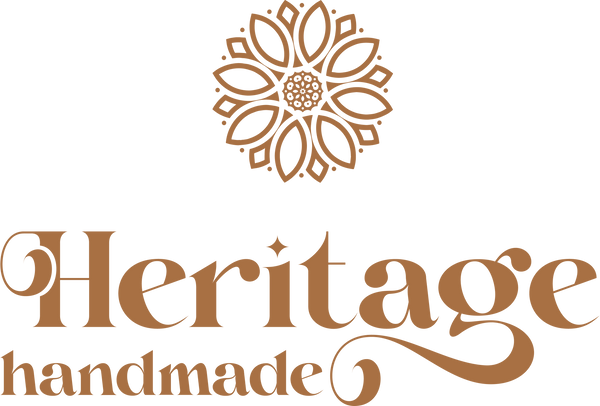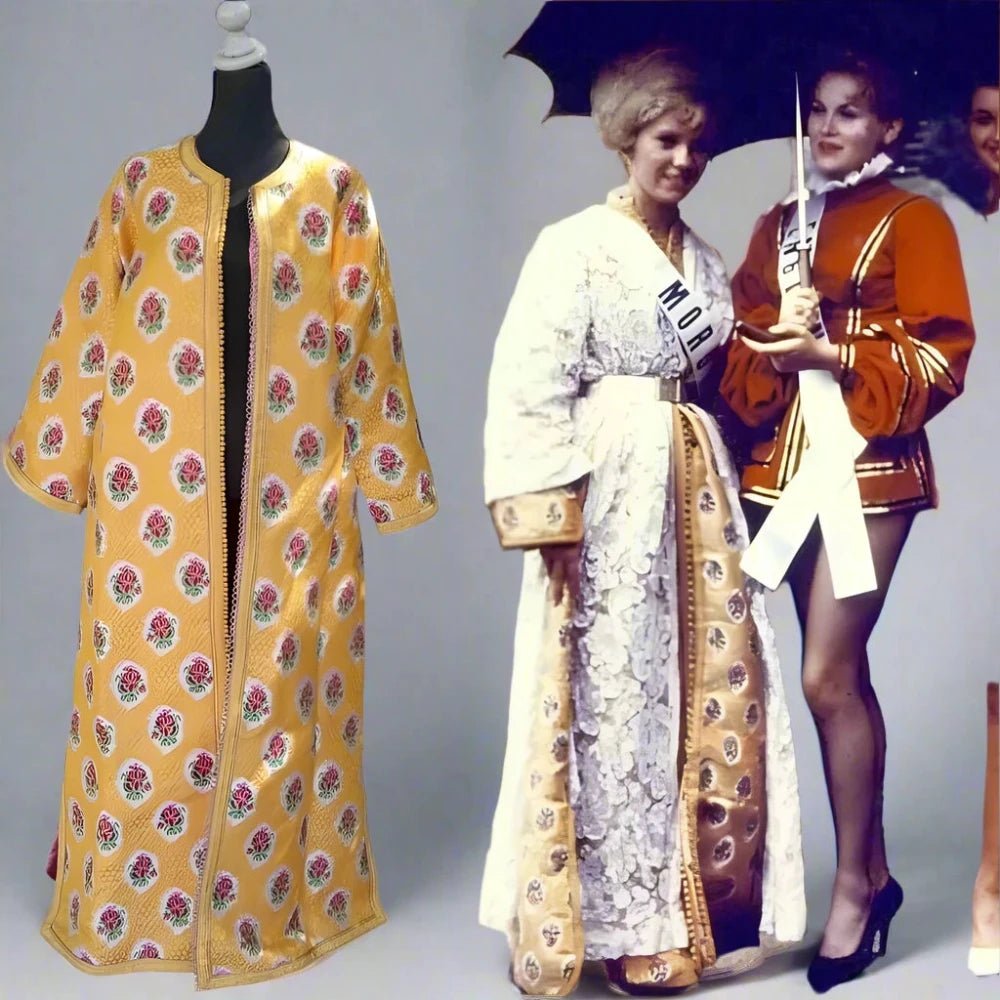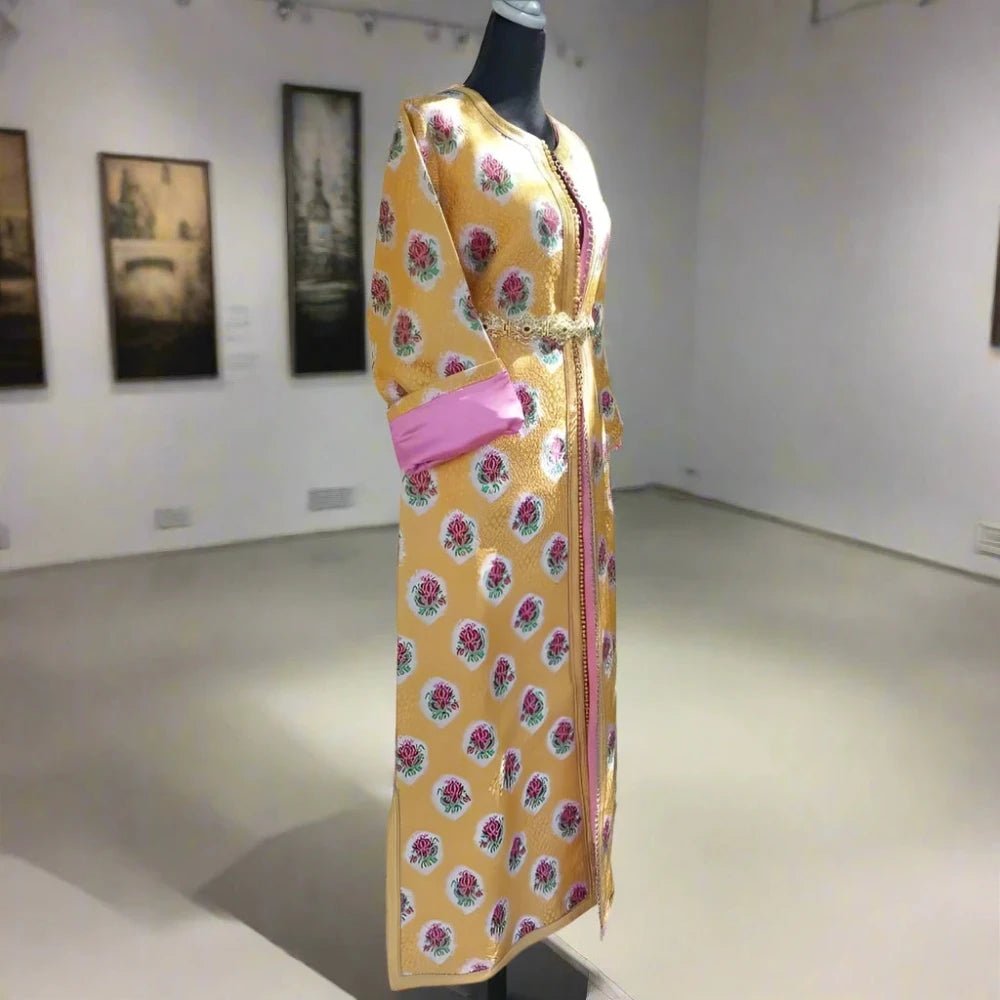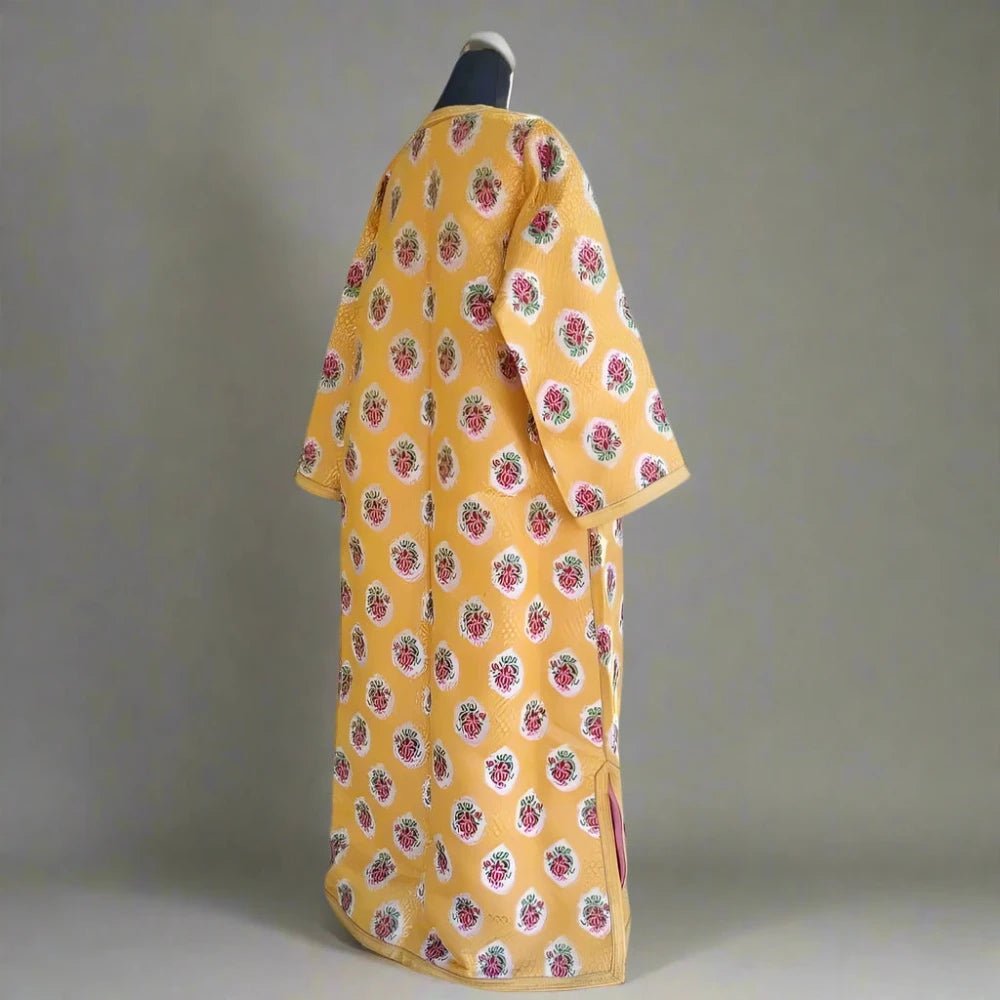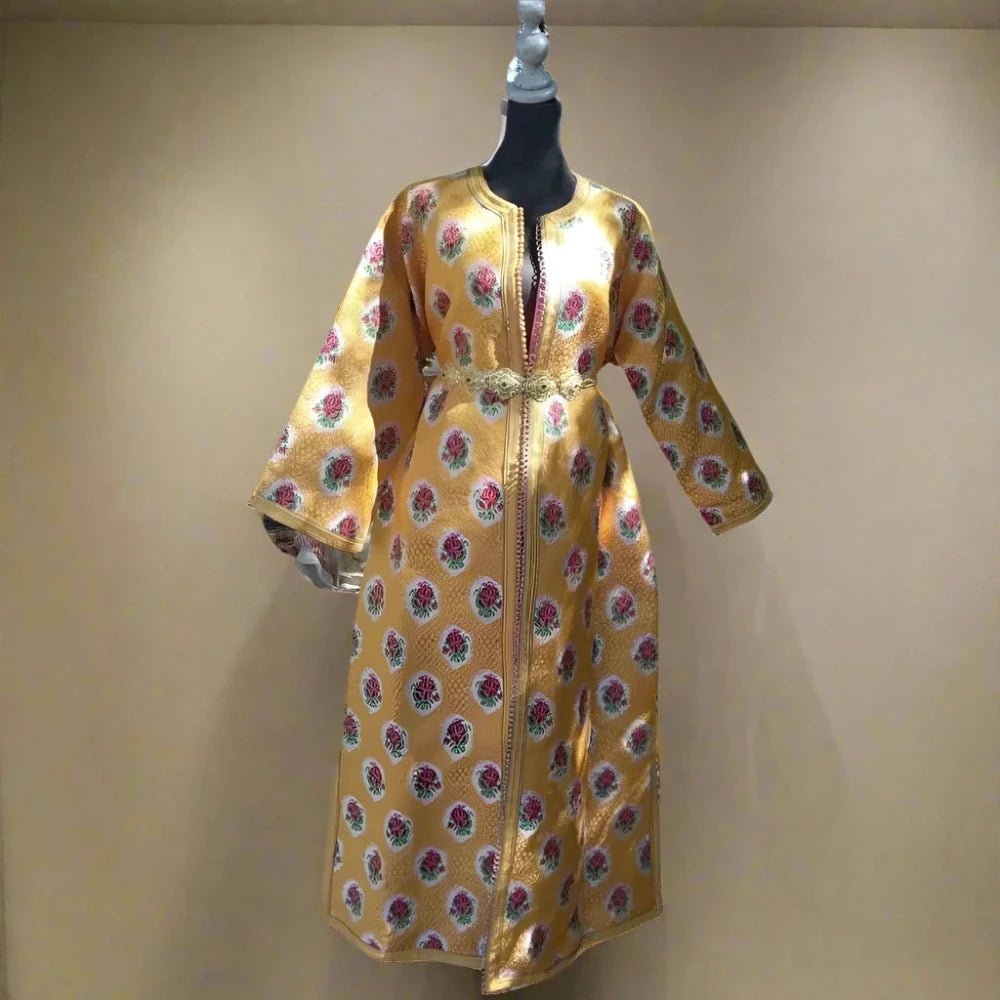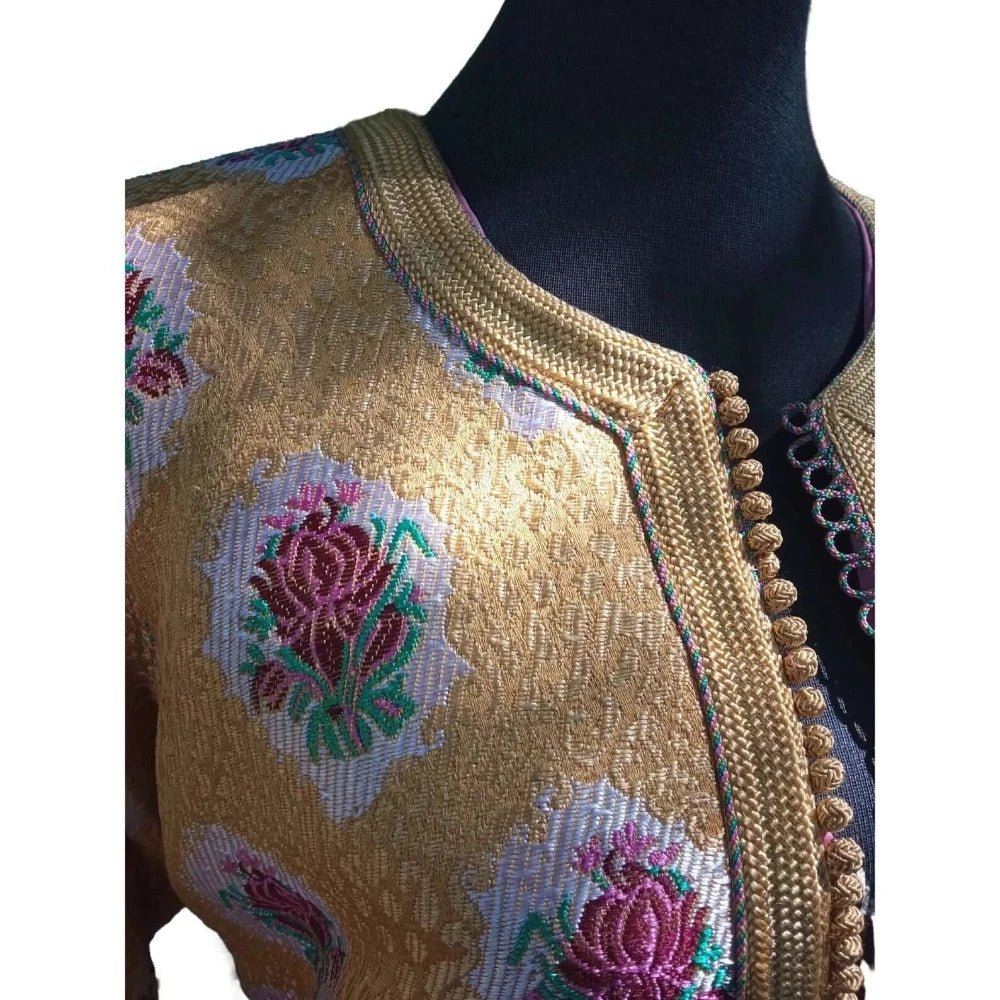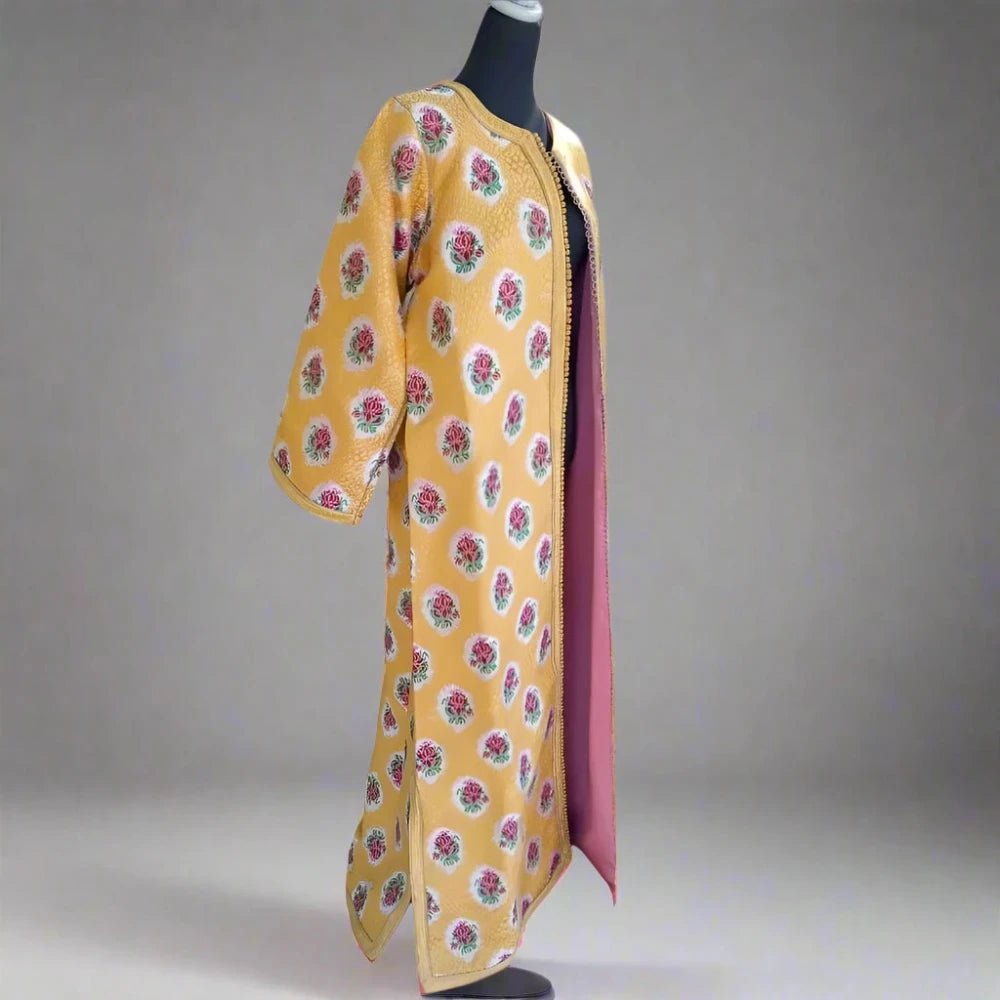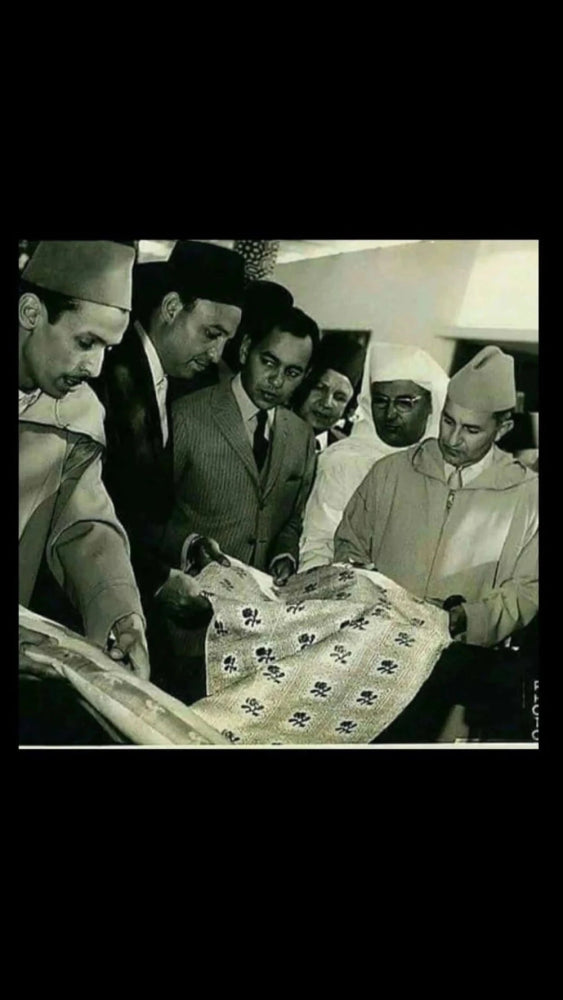
The 10 Surprising Truths About Moroccan Kaftans you should know
The 10 Surprising Truths About Moroccan Kaftans / Caftans you should know
Moroccan kaftans, celebrated for their stunning beauty and rich cultural heritage, are much more than just traditional garments.
They weave a complex narrative about social status, class representation, and the evolving dynamics of Moroccan society.
Here, we delve into the intricacies of these exquisite pieces of attire, uncovering ten surprising truths that reveal both their positive and negative aspects.
Table of Contents
- 1. The Luxurious Fabrics: A Mark of Wealth
- Positive Insight: Silk and Velvet as Symbols of Sophistication
- Negative Fact: Accessibility Limited to the Wealthy
- 2. Intricate Adornments: Showcasing Artistry
- Positive Insight: Gold Thread and Gemstone Embellishments
- Negative Fact: Potential for Artisan Exploitation
- 3. Royal Ceremonies: Symbolizing Status
- 4. Public Celebrations: Visual Representation of Social Standing
- Positive Insight: Elegance in Festivals and Gatherings
- Negative Fact: Social Pressure and Expectations
- 5. Personal Milestones: Reflecting Familial Prestige
- Positive Insight: Significance in Weddings and Engagements
- Negative Fact: Financial Strain on Families
- 6. Regional Variations: A Tapestry of Diversity
- 7. Artisanal Heritage: Preservation and Challenges
- 8. Modern Adaptations: Blending Tradition and Innovation
- 9. Symbolism and Identity: A Cultural Reflection
- 10. Global Influence: Impact Beyond Borders
- Positive Insight: International Fashion Trends
- Negative Fact: Economic Disparities in Global Markets
- How Can We Enhance the Benefits and Mitigate the Challenges of Moroccan Kaftans?
- The Global Influence and Future Prospects
- Innovations in Kaftan Design
- Cultural Preservation and Community Empowerment
- Advocacy for Fair Trade and Ethical Fashion
- Conclusion: Celebrating the Legacy of Moroccan Kaftans
1. The Luxurious Fabrics: A Mark of Wealth
Positive Insight: Silk and Velvet as Symbols of Sophistication
Silk and velvet, often the fabrics of choice for high-end Moroccan kaftans, are synonymous with elegance and sophistication.
These materials, cherished for their smooth texture and luxurious feel, are meticulously selected to create garments that not only provide comfort but also project a sense of high social standing.
The sheen of silk and the richness of velvet add an opulent touch, making these kaftans a true embodiment of refined taste and status.
Negative Fact: Accessibility Limited to the Wealthy
Despite their allure, the use of such luxurious fabrics underscores a significant economic disparity.
The high cost of silk and velvet restricts these garments to the wealthy, creating a visible divide between those who can afford these opulent pieces and those who cannot.
This exclusivity highlights the broader issue of economic inequality within Moroccan society, where only a select few can indulge in the luxury of these high-end kaftans.
2. Intricate Adornments: Showcasing Artistry
Positive Insight: Gold Thread and Gemstone Embellishments
The artistry involved in crafting Moroccan kaftans is truly remarkable.
These garments are often adorned with gold thread embroidery, sequins, and gemstones, each meticulously placed to enhance their visual appeal.
Techniques such as "Tarz" embroidery involve intricate patterns and detailed embellishments that reflect the high skill level of Moroccan artisans.
These adornments not only beautify the kaftans but also serve as a testament to the rich cultural heritage and craftsmanship of Morocco.
Negative Fact: Potential for Artisan Exploitation
However, the labor-intensive nature of creating these elaborate designs can sometimes lead to the exploitation of artisans.
Despite the high value of their work, artisans may not always receive fair compensation for their efforts.
This raises important concerns about labor rights and fair trade practices, highlighting a need for better recognition and remuneration for the skilled individuals who keep this traditional craft alive.
3. Royal Ceremonies: Symbolizing Status
Positive Insight: Prominence in Royal Events
Kaftans play a significant role in Moroccan royal ceremonies, where they are celebrated for their elegance and prestige.
Members of the royal family and high-ranking officials wear beautifully crafted kaftans, showcasing the luxurious fabrics and intricate designs that mark these special occasions.
The use of kaftans in such events highlights their importance as symbols of cultural heritage and refinement, emphasizing the honor and distinction associated with these ceremonial occasions.
Negative Fact: Perceptions of Exclusivity
The prominence of kaftans in royal ceremonies can sometimes create perceptions of exclusivity.
The elaborate designs and luxurious materials used in these garments may underscore a sense of distinction that can be seen as separating those who participate in these high-profile events from the broader population.
While kaftans dresses are a significant part of Moroccan cultural traditions, their role in such settings can contribute to a sense of separation from different social experiences, reflecting the diversity in how these traditions are experienced across society.
4. Public Celebrations: Visual Representation of Social Standing
Positive Insight: Elegance in Festivals and Gatherings
During public celebrations and festivals, Moroccan kaftans become a canvas for displaying cultural pride and social status.
These occasions provide an opportunity for individuals to don their finest kaftans, showcasing their wealth and standing within the community.
The elegance and beauty of the kaftans worn at these events add to the festive atmosphere, making them a focal point of admiration and respect.
Negative Fact: Social Pressure and Expectations
However, the emphasis on appearance during these celebrations can create social pressure and expectations.
The need to wear elaborate and expensive kaftans to uphold one's status can be burdensome, especially for those who may not have the means to afford such luxury.
This pressure can overshadow the cultural and celebratory aspects of these events, shifting the focus to material displays of wealth.
5. Personal Milestones: Reflecting Familial Prestige
Positive Insight: Significance in Weddings and Engagements
Kaftans play a pivotal role in personal milestones such as weddings and engagements, where they symbolize familial prestige and social standing.
The bride's kaftan, often a centerpiece of the ceremony, is chosen to reflect her family's status and wealth.
These garments, with their intricate designs and luxurious materials, add a touch of grandeur to these important life events, making them memorable and special.
Negative Fact: Financial Strain on Families
While kaftans enhance the significance of personal milestones, they can also impose a financial strain on families.
The cost of acquiring a high-quality, elaborate kaftan for such events can be substantial, creating financial burdens for those who feel compelled to maintain social appearances.
This aspect highlights the intersection of cultural tradition and economic reality, where the desire to uphold family honor and prestige can lead to significant financial commitments.
6. Regional Variations: A Tapestry of Diversity
Positive Insight: Unique Styles Across Regions
Moroccan kaftans are not monolithic; they vary significantly across different regions, each bringing its unique style and craftsmanship to the fore.
From the rich, vibrant colors of Marrakech to the refined, intricate designs of Fez, regional variations in kaftans reflect the diverse cultural tapestry of Morocco.
These differences add to the richness and depth of Moroccan fashion, showcasing the country's cultural diversity.
Negative Fact: Regional Inequalities
However, these regional variations also highlight inequalities in resources and access to materials.
Regions with more affluent populations can afford to use more luxurious fabrics and embellishments, while less affluent areas may rely on simpler materials.
This disparity can perpetuate regional inequalities, where certain areas are seen as more prestigious or fashionable based on the quality and intricacy of their kaftans.
7. Artisanal Heritage: Preservation and Challenges
Positive Insight: Keeping Traditions Alive
The creation of Moroccan kaftans involves a high level of artisanal skill, passed down through generations.
This tradition preserves cultural heritage and provides livelihoods for many artisans.
Workshops and apprenticeship systems ensure that these skills are maintained and nurtured, keeping the craft alive for future generations.
Negative Fact: Threat of Modernization
However, the artisanal heritage of kaftan making faces threats from modernization and mass production.
The influx of cheaper, machine-made alternatives can undermine the value of handcrafted kaftans, putting traditional artisans at a disadvantage.
This trend raises concerns about the sustainability of traditional craftsmanship in the face of global economic pressures.
8. Modern Adaptations: Blending Tradition and Innovation
Positive Insight: Contemporary Fashion Influence
Modern adaptations of Moroccan kaftans dress have brought them into the global fashion spotlight.
Kaftan Designers incorporate traditional elements into contemporary styles, making kaftans accessible and appealing to a wider audience.
This blending of tradition and innovation reflects the dynamic nature of Moroccan culture and its ability to adapt and evolve.
Negative Fact: Loss of Authenticity
However, the push towards modern adaptations can sometimes lead to a loss of authenticity.
The commercialization of kaftans for global markets can dilute their traditional significance and cultural heritage.
Maintaining a balance between innovation and preserving authenticity remains a critical challenge for the future of Moroccan Caftans.
9. Symbolism and Identity: A Cultural Reflection
Positive Insight: Expression of Cultural Identity
Kaftans serve as a powerful expression of Moroccan cultural identity. They encapsulate historical narratives, regional diversity, and social values, making them more than just garments.
Wearing a kaftan Dress is a way for Moroccans to connect with their heritage and express pride in their cultural roots.
Negative Fact: Cultural Appropriation
However, the global popularity of kaftans has led to instances of cultural appropriation, where elements of the traditional garment are used without proper acknowledgment or respect for their cultural significance.
This can lead to a misrepresentation and trivialization of Moroccan culture, raising important questions about cultural sensitivity and respect.
10. Global Influence: Impact Beyond Borders
Positive Insight: International Fashion Trends
Moroccan Caftans have made a significant impact on international fashion trends.
Kaftan Designers from around the world draw inspiration from their intricate designs and luxurious materials, incorporating these elements into haute couture and mainstream fashion.
This global influence showcases the universal appeal and timeless beauty of Moroccan kaftans.
Negative Fact: Economic Disparities in Global Markets
However, the global demand for kaftans can also exacerbate economic disparities.
While international markets benefit from the allure of these garments, the local artisans who create them may not see proportional financial gains.
Ensuring fair trade practices and equitable distribution of profits is essential to addressing these disparities and supporting the artisans who sustain this cultural heritage.
SO!!
Moroccan kaftans are more than just elegant garments; they are a living embodiment of Morocco's cultural identity and social history.
The 10 truths about Moroccan kaftans / Caftans reveal a complex interplay between tradition, social status, economic disparity, and modernity.
By acknowledging both the positive insights and the negative facts, we can work towards preserving the authenticity and significance of kaftans while promoting fair and sustainable practices.
As we celebrate the timeless beauty and craftsmanship of Moroccan kaftans, let us also commit to supporting the artisans and communities that keep this rich cultural heritage alive for future generations.
How Can We Enhance the Benefits and Mitigate the Challenges of Moroccan Kaftans?
-
The Global Influence and Future Prospects
Moroccan kaftans have made a significant impact on global fashion, capturing the attention of designers and fashion enthusiasts around the world.
This international appeal has opened up new avenues for Moroccan artisans to showcase their skills on a global stage.
By embracing this global influence, there is a unique opportunity to promote Moroccan culture and heritage more broadly, while also ensuring that the economic benefits reach the local communities.
The future of Moroccan kaftans looks promising, with a growing interest in sustainable and ethically produced fashion.
As consumers become more conscious of the origins and craftsmanship behind their clothing, there is a greater appreciation for garments like the kaftan that carry a deep cultural significance and are made with exceptional skill and care.
This shift towards mindful consumption can play a crucial role in supporting traditional artisans and preserving their craft.
-
Innovations in Kaftan Design
Innovation in kaftan design continues to evolve, blending traditional elements with modern trends.
Contemporary designers are experimenting with new materials, cuts, and embellishments while maintaining the essence of the classic kaftan.
These modern interpretations can attract a younger audience and keep the tradition relevant in today's fast-paced fashion industry.
Collaborations between Moroccan artisans and international designers can also foster creative exchanges, leading to unique collections that celebrate the rich heritage of the kaftan while introducing fresh perspectives.
Such collaborations can highlight the versatility of the kaftan and its ability to transcend cultural boundaries.
-
Cultural Preservation and Community Empowerment
Efforts to preserve the cultural heritage of Moroccan kaftans must be coupled with initiatives that empower local communities.
Supporting educational programs that teach traditional craftsmanship to younger generations is vital in ensuring the continuity of these skills.
Additionally, providing financial and technical assistance to artisan cooperatives can enhance their capacity to produce high-quality kaftans and compete in global markets.
Community-based tourism initiatives can also play a significant role in cultural preservation.
By offering tourists authentic experiences, such as visiting artisan workshops and participating in traditional craft-making processes, these initiatives can generate income for local communities and raise awareness of the cultural importance of kaftans.
-
Advocacy for Fair Trade and Ethical Fashion
Promoting fair trade practices and advocating for ethical fashion are essential steps in addressing the challenges faced by kaftan artisans.
Consumers, fashion brands, and policymakers must work together to ensure that the artisans receive fair wages and work in safe conditions. Certification programs and labels that guarantee fair trade and ethical production can help consumers make informed choices and support responsible brands.
Conclusion: Celebrating the Legacy of Moroccan Kaftans
The legacy of Moroccan kaftans is a testament to the country's rich cultural history and the incredible craftsmanship of its artisans.
By understanding the ten surprising truths about these garments, we can appreciate their cultural, social, and economic significance.
As we move forward, it is crucial to balance the preservation of traditional techniques with the adoption of innovative approaches that keep the kaftan relevant and vibrant in contemporary fashion.
Celebrating the legacy of Moroccan kaftans involves more than just admiration of their beauty; it requires a commitment to supporting the artisans and communities that sustain this heritage.
Through conscious consumer choices, advocacy for fair trade, and efforts to empower local communities, we can ensure that the story of the Moroccan kaftan continues to be told for generations to come.
In embracing the rich tapestry of Moroccan kaftans, we honor a tradition that transcends time and place, weaving together the threads of history, culture, and artistry into a garment that is as meaningful as it is beautiful.
